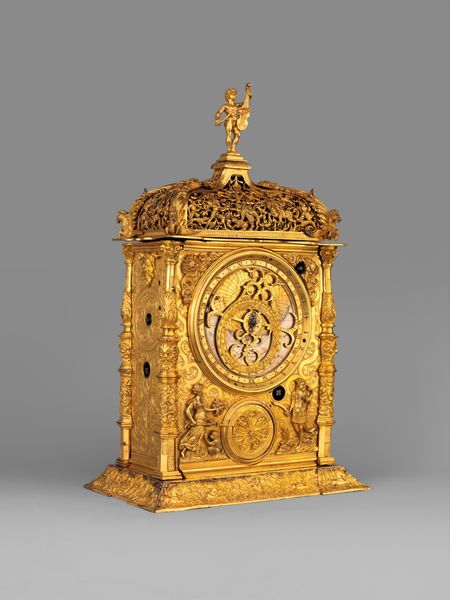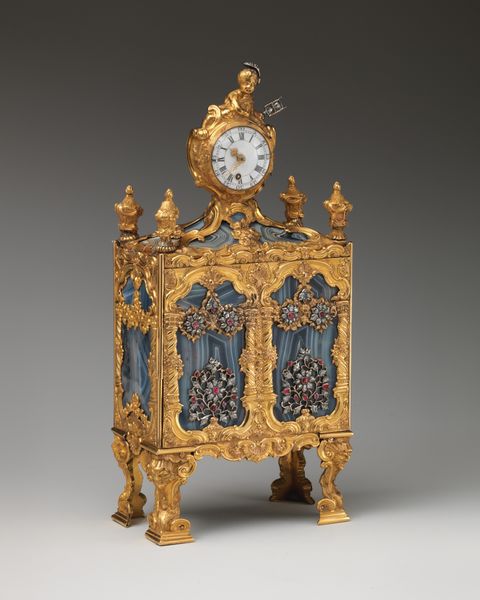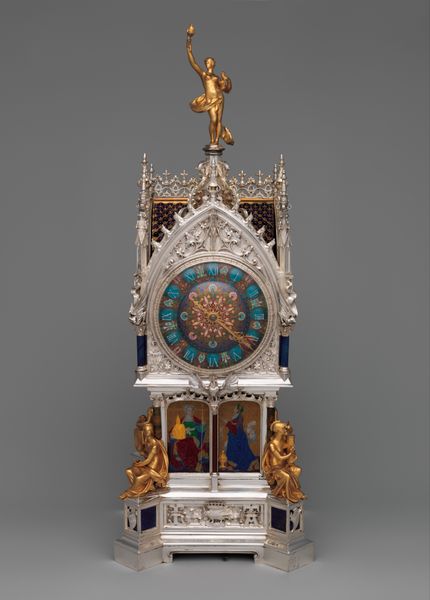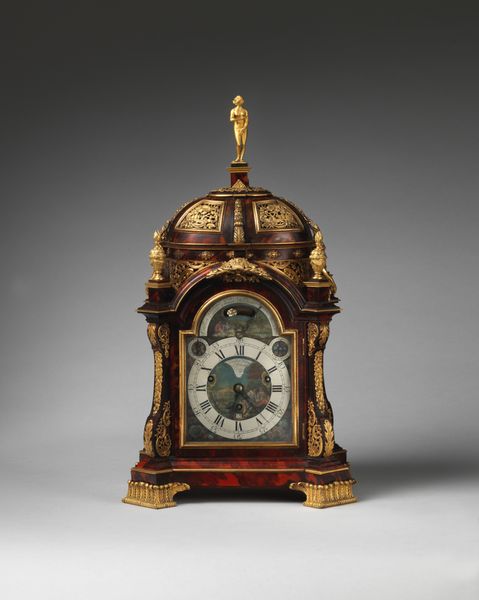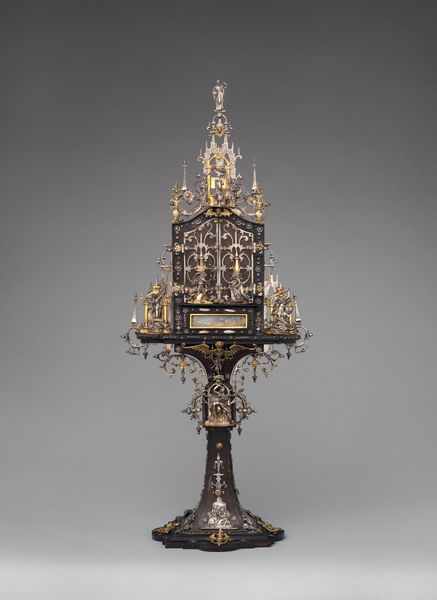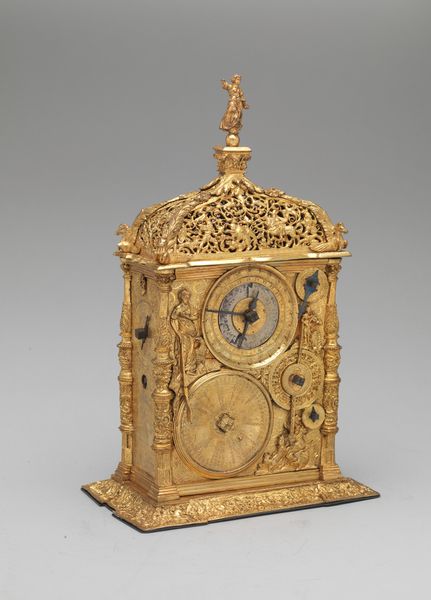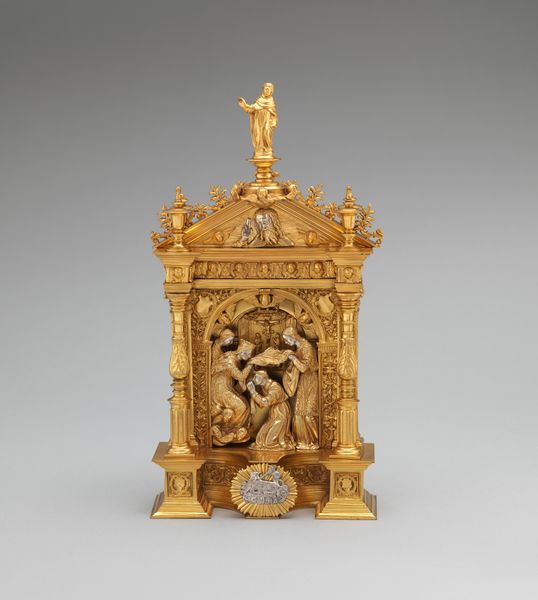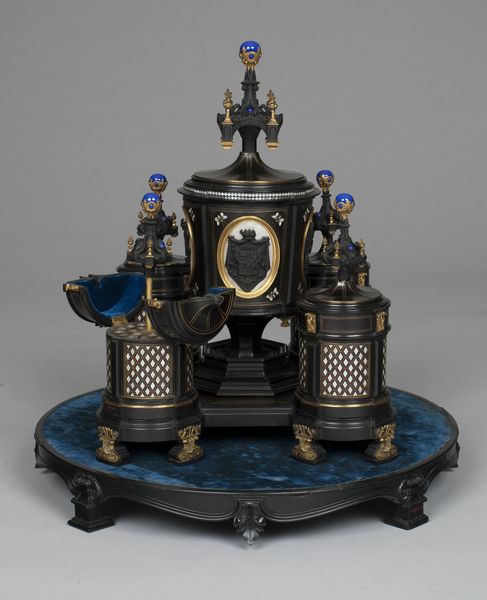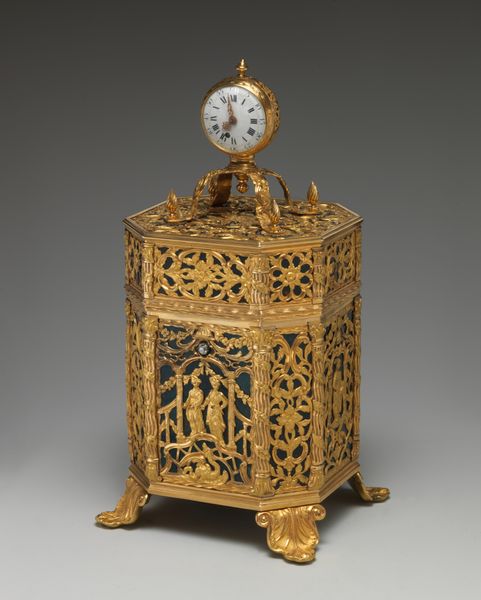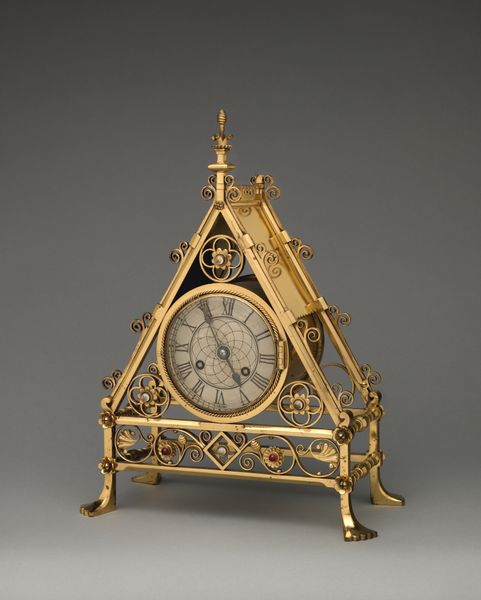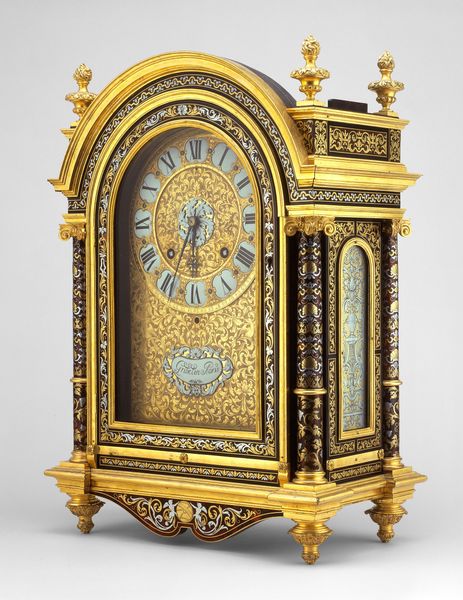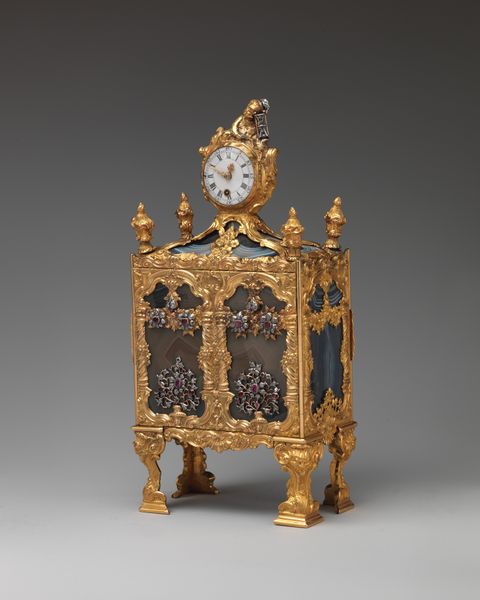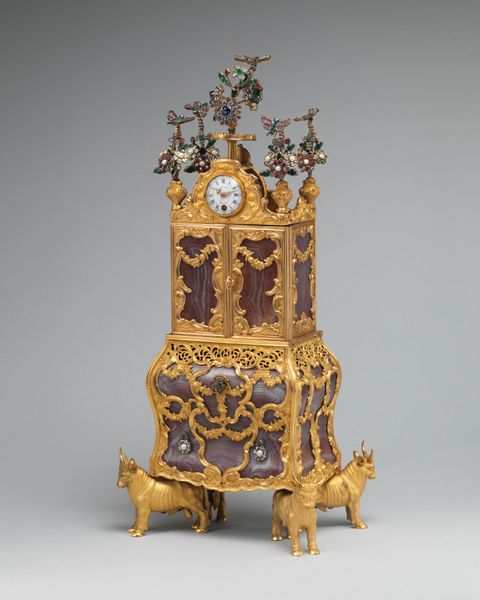
metal, bronze, sculpture
#
baroque
#
metal
#
sculpture
#
bronze
#
sculpture
#
decorative-art
Dimensions: height 39.5 cm, width 20.3 cm, depth 20.3 cm
Copyright: Rijks Museum: Open Domain
This table clock, standing nearly 40 cm tall, was crafted in the early 17th century by Richard Ledertz. Gilded brass forms the skeleton of the tower, its surfaces etched with intricate patterns. The clock is as much a feat of engineering as it is a decorative object, with the dials tracking not only the hours, but also phases of the moon. Consider the precision required to fabricate these complex mechanisms, the manual dexterity required to assemble them. The use of brass speaks to the rise of industrial production at this time, while the overall design evokes the architecture of cathedrals and civic buildings, symbolizing power and prestige. Tower clocks like this one were luxury items, commissioned by the elite as symbols of their wealth and status. They represent the intersection of craft, technology, and commerce in early modern Europe. In appreciating this clock, we can appreciate how the boundaries between art, craft, and industry are always shifting.
Comments
rijksmuseum about 2 years ago
⋮
This clock is a miniature version of the famous astronomical clock that was erected in the cathedral of Strasbourg in the second half of the 16th century. Not only do the dials indicate time, but also the days and months of the year, the phases of the moon and the position of the constellations: an entire universe in miniature.
Join the conversation
Join millions of artists and users on Artera today and experience the ultimate creative platform.
